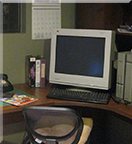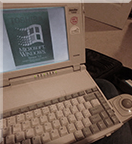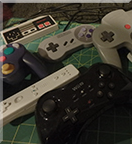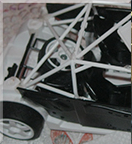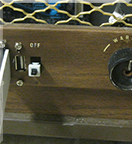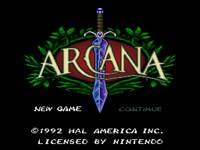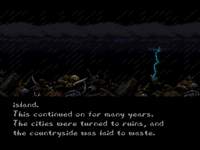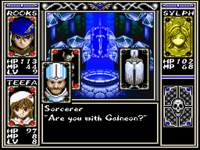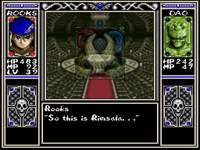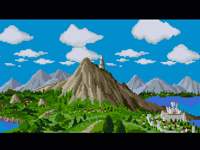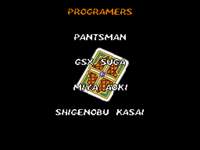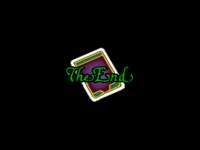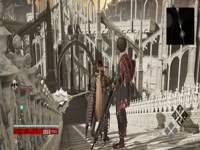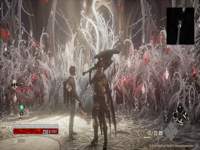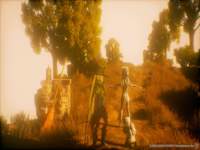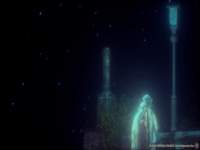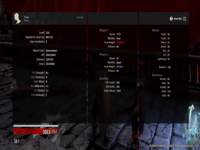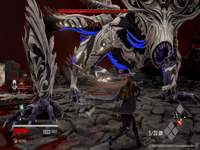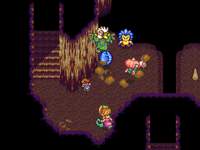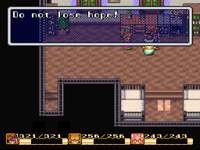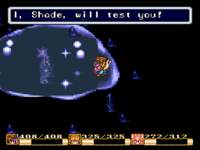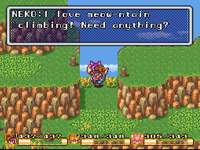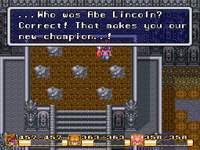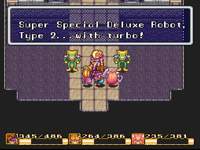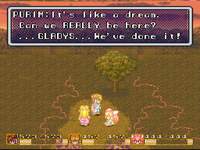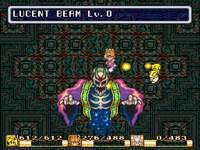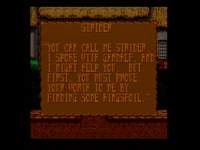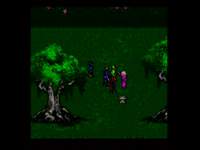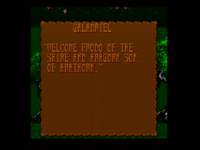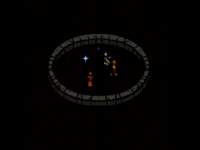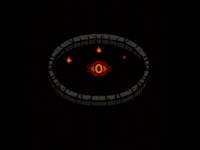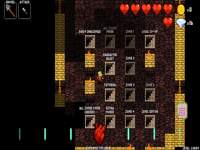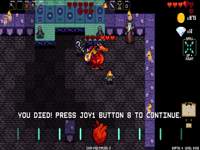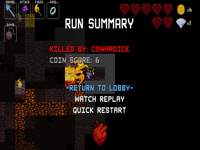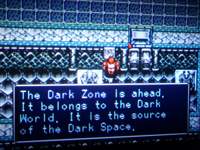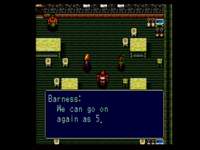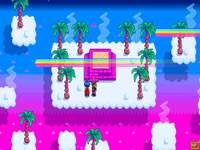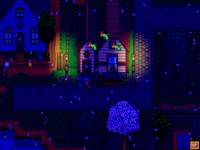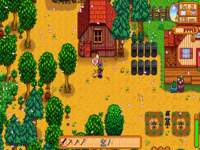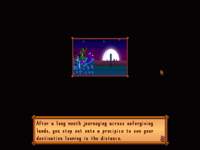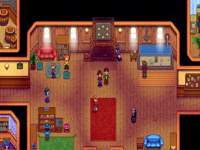Finished Arcana (SNES).
Play as Rooks, an orphaned magic card user who needs to stop an evil empress vying to take over the kingdom. Rooks also wants to live up to his late father's legacy.
Turn-based JRPG, Wizardry-like, with "cards" being a prominent visual motif and somewhat gameplay motif. Unique qualities: no backtracking, death of anyone in your party == game over
The use of cards in the gameplay would lead you to think the game has a combat system way more evolved than the old "Fight Magic Item Flee". It does not.
There is a rock-paper-scissors-style elemental system. The game is balanced such that you can ignore it. There are also four pokemon ("Spirits") which act like party members except disposable and only their magic is any good.
Pop quiz: magic spell called "Attribute 6". What does it do, take a guess? Bonus: how it is different from Attribute 5.
I think people might not play this game any more because of the enemy system. What enemy system? Random encounters. How many? A lot. It has one of the worst grinds. Find enclosed: random encounters every two steps in the map, or on simply a 90 degree turn. If not for the in-game map it would have been a big problem. Although there's items and spells to hightail it out of a dungeon, you always enter a dungeon from the very beginning.
Lack of checkpointing is a problem for one of the largest areas called "Stavery Tower", a twelve-floor maze. You can't save while in a dungeon, not even a save-to-be-deleted-on-resume (those are not popular on SNES platform anyway). So you will need to book one to three hours per game session. Alternatively, you can leave your SNES on and hope there isn't a power outage, or use a piece of technology which rhymes with asdflemulator.
Still, the first 5 minutes and the last 30 minutes were Awesome. This game has a great soundtrack and visual style with a lot of character. The final boss concept is extremely cool. This game, you can tell what they were going for.
Finished Valkyria Chronicles 4 (PS4).
Picked this up after playing it at a demo station at a convention.
For Valkyria Chronicles 1, it would actively bother me how misunderstood this game was. I would be talking to some gamer friend about what we're playing and say I am playing VC. I assert how good and unique it is, but they don't get it. They act as if I'm talking about Xenogears or Dragon Quest. As if it's the well-known formula with a few small changes. It is not. This is even for people who play JRPGs. Don't you dare recommend me any PS3 game if you have not played or at least heard a little of VC. It's weirdly absent from places. If there's a reviewer who talks about "the best games on the platform" and leaves it out, they haven't done the due diligence.
For Valkyria Chronicles 2 and 3 things took other directions. 1) They were mobile games, likely to cut costs. 2) They became less of a good dramatic historical fiction and more cheesy anime fan service. VC2 had practically no marketing in the west and due to VC2's low sales VC3 was not even released outside of Japan. Some people liked these games, I wouldn't go for them personally, I don't think these are fitting to WWII allegory.
For Valkyria Chronicles 4, they returned back to a proper console release on PS4 and a more serious story. Like the others it is a fictionalized version of the events of WWII. Take control of Basically-France fighting Basically-Germany in a Basically-Giant-Snowmobile. It keeps consistent gameplay with the others, mixing turn-based an action elements.
Overall:
- It is a pretty good strategy game.
- The game is very easy.
- All game except endgame, I always had more money than I had things to spend it on. The money counter might as well show a random number.
- Cutscene-to-gameplay ratio is very high.
Nonetheless would recommend because it kept me from playing Code Vein any more so it encourages healthier habits.
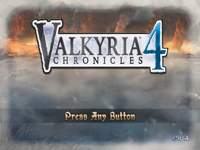
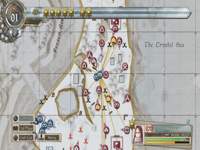
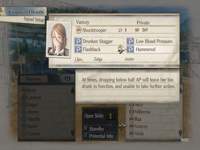
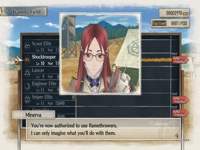
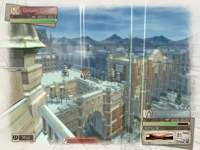

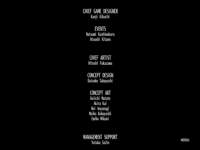
Finished Donkey Kong Country 2: Diddy's Kong Quest. This was a co-operative gameplay I finished with a couple friends as a follow up to our completion of Donkey Kong Country 1.
Completion time: about a year, since we played in small increments once in a while.
Game is longer and a lot spicier than 1. Some levels gave us a very hard time. Yeah I am a big fan of the minecart autoscroller.
Time and time again I am really impressed by how much graphics can be fit on a SNES cart. The levels are all full of lush, irregularly-shaped (non-tiled-looking) elements without a lot of repetition; sprites are big with lots of animations, lots of frames in each one; backgrounds have a lot of variety. At the same time, it also doesn't appear they got too fancy with storage of graphics. I looked at the ROM and could spot at least some 4bpp graphics data stored plain, uncompressed. They just used a big cartridge-- 32mb, big for this console.
The technical high points for this game are offline rather than online of course. These are pre-rendered 3D models rendered with Silicon Graphics software, likely on CPU, baked into a bunch of 2D sprites. Everyone likes this. I can't think of a single fourth-console-generation game which does this and looks bad. More games would have surely done it if it wasn't so expensive back then, in terms of money.
Only criticism is I was disappointed with the final boss fight. The fight from DKC1 established a pretty high bar, to be fair- it had that cool "fake credits then surprise there's more". Not saying DKC2 had to replicate that, but maybe the final boss could have had something else cool. Nope. You fight King K Rool on a pirate ship. He throws projectiles. Pretty standard stuff. Maybe they thought no one would get far enough to see that, due to Windy H̶e̶l̶l̶ Well.
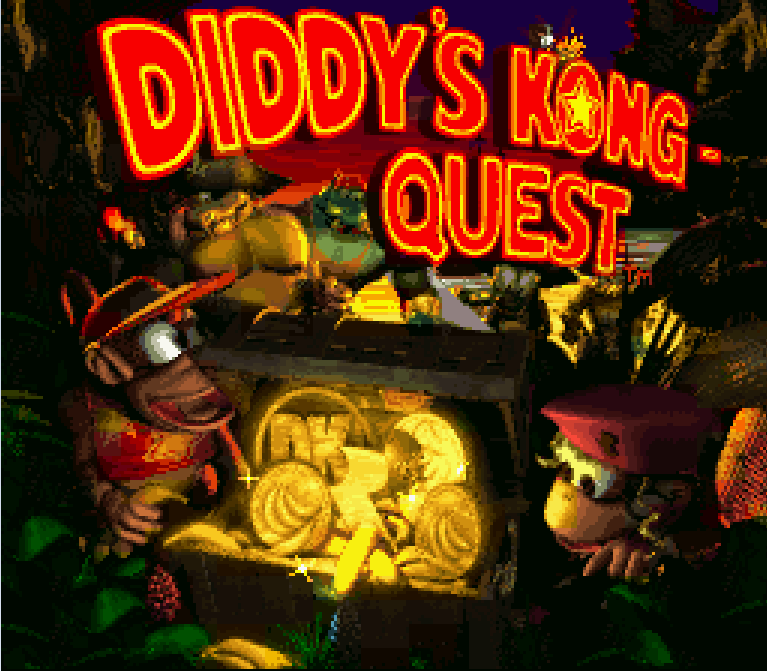
Finished Code Vein (PS4)
Visual style: modern JRPG
Gameplay: Souls-like
The game takes place in a dystopic future where vampires were created to fight in a war against an evil force. Bad news #1 The government is trying to get ways to harvest blood to sustain the vampires, but it's not going as smoothly as they hoped. Bad news #2 the evil force is not really gone.
One innovation they added is a 'companion' system where an AI-controlled NPC accompanies you basically at all times. The AI is competent and not a liability like in some games.
The game improves on Souls in some areas.
- Online matching system. Match with anyone! Your and their levels are scaled to match so it's fair.
- The class system makes it so you can't irreparably screw yourself through uninformed decisions.
- A map
- Healing item cooldown makes it harder to accidentally waste heals
- AI is 'smart', doesn't randomly jump off ledges.
I was nervous they might have strategically put the best environment in the demo I played. But, no, the demo was representative. The environments were consistently good. Big complicated areas, detailed rooms without copypaste, interesting stuff to look at far into the horizon.
Although the game is not perfect (nothing is, right?), no one in the art team seems to care about CLIPPING, as far as I'm concerned it's a 'perfect score' game. It doesn't happen every day there something which takes so many interesting risks, turns, stylistic decisions.
Although I did 4 playthroughs I still want to do some more things. A bunch of the replay-ability comes from the multitude of classes ('blood codes') and multiple endings, which range from 'uplifting' to 'stomp your heart into a zillion pieces'.
The game is a bit violent and sleazy so maybe not appropriate for all audiences. But it is really good. I hope there will be a sequel or DLC.
A cool (and hot!) boss fight in Code Vein. Guest appearances from Louis and random internet person.
Total play time = 2 years, 156 days, 20 hours, 36 minutes, 39 seconds
Couple friends and I started playing back in April 2017. The progress isn't deliberately slow, it's just that we playing a half-hour or an hour here and there, once in a while and it's a proper full-length RPG. Furthermore we made a best effort to play it spoiler-free with as minimal outside help as possible.
I never beat this game before. SoM is in the category of "played as a child by repeated rental, wanted to own, couldn't get a copy".
It is hard nowadays imagining "not being able to purchase something" but was the situation here. If no video or toy store in our city had it then out of luck. There were also toy catalogs where you can phone or mail in an order, but they weren't a whole lot better in terms of the video game selection. The one place I could find that had Secret of Mana had it for rent. So I rented it repeatedly. I still had to take it back at certain intervals and some jerkface wiped my save. After that I became demoralized and moved on to playing something else (Uncharted Waters 2)
Fast-forward to today and I have every game in the world. This one has a lot of critical acclaim, and still has some love today (it got a remake last year), it deserves playthough to the end.
Originally I thought I'd move onto the remake after finishing this, but after reading some reviews, maybe not 🙁 It's just as well, initially I was kind of turned off by the graphics. When early gameplay came out I recall telling people it looked Bad. Like some free-to-play MMO from ~2006. It reminded me of Audition Online. I don't know what's up with the art direction. Apparently there are problems with the soundtrack and gameplay also... How did they mess this up? I may someday play it anyway but give it a while.
This game had a lot of positive qualities, it deserves to be on all those top-10 lists.
- The soundtrack is very strong
- Large sprites with nice animations
- Many cool concepts for bosses, large enemy artworks
- Willingness to make a three-player SNES game represents a lot of technical initiative
The one thing that was almost a problem- it is borderline on the "turn based games disguised as action games" genre.
You know. Practically very MMORPG does this. The combat works like: you and the enemy can both be freely positioned in the world, and can attach each other, but the attacks always land regardless of how you are positioned. Why have the positioning mechanic at all, then? Why not just have a menu? If they shoot an arrow or something it's not like you can move out of the way. I know why they do it in MMOs, but I'm less on board in any locally-played action game.
I suppose this bothers me because it encourages you to waste brain cells in combat trying to move around the map when you might as well just stand there.
Fortunately, this game doesn't 100% do that, it's only for certain attacks. Some experimenting helped figure this out. For other ones, you can move out of the way, sometimes outside of a hitbox that seems rather big.
On a whole I loved playing this game, and getting the chance to play it co-operatively even though it's long after the fact.
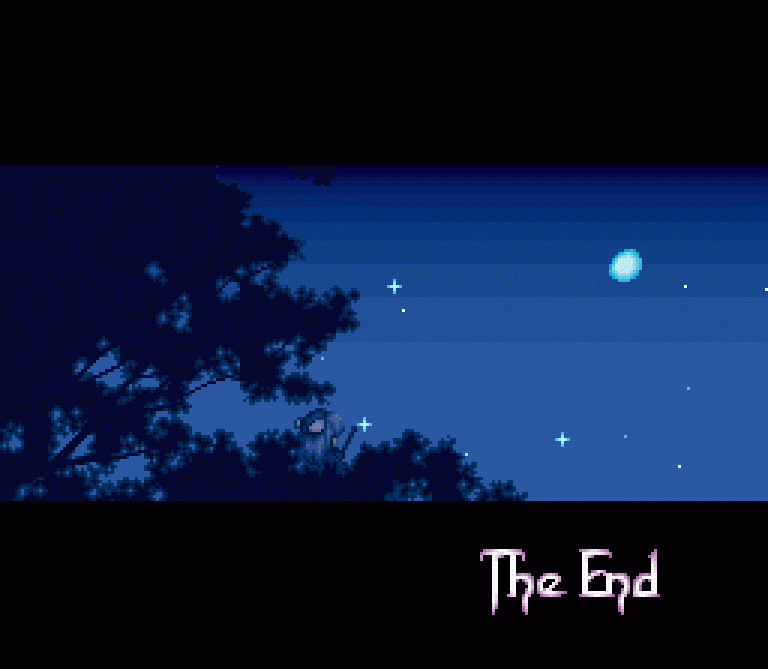
Finished J.R.R. Tolkien's Lord of the Rings (SNES)
This is an action-RPG based on the book series, pre-Peter Jackson movie IP.
This game has some cool moments and good atmosphere and potential to be good. Still, it was held back by many technical problems. This game ended up being a rabbit hole into something else.
A couple weeks ago, I cleared the last boss, the Balrog using the full party (minus Gandalf, since having him in your party prevents you from beating the boss; also Boromir is E_NOTIMPL) and finished the game but didn't get such a good ending because Merry and Pippin died in the boss fight. They die really easily.
So last Saturday, I booted up the game with the intention to resume at the boss fight, attempt it again and keep them alive.
However the password I had written down was rejected by the game. I swear to goodness I wrote it down correctly. I went upstairs to my computer, reproduced the situation with an emulator. It turns out, the game will indeed give you invalid passwords and that's what happened here. So I went about trying to figure out how to "fix" my password.
The password system itself involves encoding a bunch of the game state in a certain way with a checksum. This game is a bit unusual in that there are no saves to the cartridge, it hashes together literally all the state into a 48-character-long password. It took a bit of effort, but I figured out how to derive the password. From there, how to un-glitch my password and preserve the progress I had (items, character stats, door open+close state) while letting it be accepted by the game. With this, I was able to re-attempt the boss fight and get the good ending!
After trying many different passwords looking for patterns, I cracked the password algorithm. It was not too much more work to put it into a program in case other people run into the same issues.
I posted the program to Github https://github.com/clandrew/lotrpwcheck/ .
As for the ending itself it was pretty cool, there is a scene where you meet Galadriel and she shows you the mirror. Although they never released a Vol II for SNES, I can see the next one picking up where this one left off.
Finished story mode of Crypt of the NecroDancer (PC)
This game is "rhythm" genre mixed with "roguelike" genre.
When I first played it I thought they took a dart board full of video game types, threw two darts and made that game. The "disco floor" mechanic was trippy and strange, and it looked like a somewhat decent roguelike with an unfitting rhythm mechanic shoehorned in. Background: I do like roguelike games (Mystery Dungeon, Dungeon Crawler) and rhythm games (DDR, Stepmania, FF Theatrhythm) always just separate.
After a few levels I got into it and saw it was built from the ground up to be a rhythm game. Even the controls, all set as combinations of arrow keys, are geared so that they can be played with a dance pad. The gameplay and story are tightly integrated around the music themes. The rhythm game-ness adds an action mechanic where there wouldn't ordinarily be one, and there are gameplay elements ("multipliers") built around this mechanic. Every other roguelike I've played has been strictly turn based and I have to slow myself down because I'm freaking out at one thing or another. For this, it's the opposite problem where you have to make quick decisions and develop the right reflexes and it ends up being really rewarding.
(do not watch if you have epilepsy)
https://youtu.be/TH08jpNNcFg
The graphics use that usual pseudo-old-school-not-really resolution mixing to a level that is pretty offensive. I've come to just tune it out. I seem to be the only person who cares about this so at this point I'm tuning it out for my own personal wellness. #selfcare
The end of the game is involves a pretty tough zone with a combination of two bosses. I attached the replay of my run of the zone!
Comments
- Using Cadence the main character.
- Starting eq: normal broadsword + apple, purchased at Diamond Dealer
- The start was pretty rough. Made a bunch of mistakes, in one part I fell into a trap with no way of getting out except bombing myself.
- Wasted a bit of time on shop purchase, item indecision
- Dead Ringer went well.
- Necrodancer did me a solid and killed an ogre for me
- I always kill my multiplier for black skeletons.
Time: 11:33 Score: 432
Besides Cadence I finished zones 1+2+3+4 with Dove, I'm looking forward to playing a few of the other characters also 🙂
*there is an option in the game's menu to turn off the "Disco floor" if there is a chance of it causing problems
Finished Brain Lord (SNES)
This is a SNES RPG, a top-down action RPG with some puzzle elements.
Like every great? RPG there are two towns. As this is a medieval-themed game, they would end up settling on town names that were something fantasy- and mystical-sounding. So of course, the first one is called "Arcs" and the second one is called "Toronto".
I don't think the phrase "Brain Lord" is ever mentioned in any part of the game.
The game incorporates some puzzle elements which were actually pretty cool. For example, a room where some text on the wall says:
"12 - 52 - Although greater in size, its equivalent is the same in time."
the answer is a three digit number. Maybe too easy?
Unique qualities:
- Levelless system
- AI pokemon fairy things that follow you and are a game mechanic
- Fast travel
- No love interest
Some people are quick with the comparisons to Zelda. Zelda doesn't have a monopoly on the puzzle-ARPG does it? It definitely is a puzzle-ARPG though.
Finished the Community Center in Stardew Valley (PC)
Stardew Valley is like a "what could have been" if SNES Harvest Moon were transported into our post-Minecraft present day. It's really approachable and fun.
HM (left), Stardew(right)

Comparison is specific to SNES HM because of the similarity of gameplay and visual arrangement of things.
For Stardew I have some small gripes which are visual
• Colors burn retinas
• most of graphics uses low-color palette but lighting effects from lamps and torches have access to way more colors?
• Pixels do not align to pixel grid for fishing line and many animations (see image)
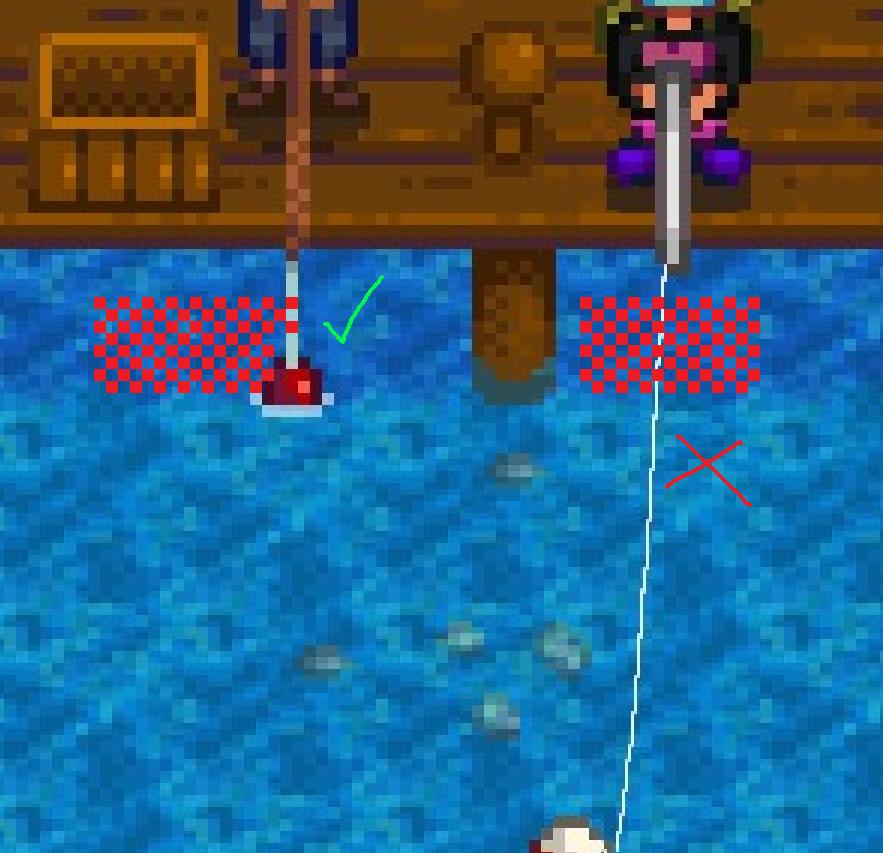
Stardew Valley is not the only offender in the category of "retro-style game that can't pick one video resolution". Shovel Knight and the Scott Pilgrim game also do this. Scott Pilgrim is probably the worst offender I have ever seen. Stardew Valley is not the worst but it's one where I have screenshots on hand.

Why is it bad? There are two parts to this, functional and aesthetic.
Functionally, it is capable of causing eye strain coming from the fact that it is visually confusing. Suppose we are looking at some 2D pixel art at a relatively coarse resolution. We use the same parts of our brains that could, say, appreciate mosaic tile artwork. The image lacks the full fidelity of the real world, but our eyes "fill in the missing information". Blocky edges become round in our mind's eye, detail is made out of nothing. When the resolution changes, it's like a tiled floor where big patches of tiles are different sizes. It's funhouse looking. It defies expectation. How can your brain interpolate things at a consistent rate, then? It's not altogether natural. Personally I experienced eye strain from this. While I am not a medical professional- just a person with a data set of size 1- I believe it could affect other people too since my eyesight is medically typical. I don't see anything necessarily causing my experience to be very unique. For people who aren't involved with graphics or low-res-looking games but play this one, they might experience eye strain yet not be to articulate why.
Aesthetically, it wrecks your scene composition. Here you've gone and standardized line width, balanced the colors of lines against the light source in your scene, taking into account the limited fidelity of the low resolution you've standardized on. But, wait a minute! You have this completely other part of the scene which is at a different video resolution. There's not an easy way to account for that in how you set up the scene. It will just look bad and I'm sad to say once you see it you can't un-see it.
The reason why the problem is possible is because these games are drawn at a much lower resolution than your native display resolution. When I run Stardew, for example, each 4x4 region of pixels tends to be (* minus the exceptions discussed here) of uniform color. On my 1920x1080 graphics setting, this implies the game is meant to run at 480x270. See if I were running the game somehow natively on a very old monitor, it wouldn't need to do anything 'special' in terms of scaling. Each of the TV's pixels is already the size of your face so whatever. But to fake a low resolution on higher resolution displays, upscaling is necessary. And that's perfectly ok. The problem is the way in which these games do the upscaling.
Most upsetting of all is that it's typically harder to get this wrong than to get it right. Yeah you read that correctly. Of course I don't have any game source code and I don't know how the developers have organized things, so I am making broad assumptions.
The supposed ease of implementation falls out of how geometry transforms and co-ordinate spaces work. If you keep a consistent low-resolution, you can set up things by:
- Allocate a low-resolution (e.g., 480x320) intermediate target and a full-resolution (e.g., 1920x1200) final target
- Draw your graphics to that intermediate. Move, flip, rotate sprites as necessary in that low-resolution space
- Draw the intermediate, scaled, to the final target
The complicated step for #2 isn't so bad since you only need to deal with one co-ordinate space. The scale at the end is really simple.
But instead, games decide to do this:
- Allocate one full-resolution (e.g., 1920x1200) final target
- Draw graphics directly (?) to that target.
- Each sprite's transformed position needs to take into account the scale-from-lowres-space-to-final-target
The problem is in step #2. Even if your calculations are 100% correct for getting everything positioned correctly in the final target, this setup will cause resolution-mixing artifacts (e.g., if you rotate anything by non-45-degree increments) since it is baked right into the design.
So, why have game developers gone out of their way to get this resolution-mixing behavior?
Maybe to save perf or memory. That said, I'm not pursuaded a small (~480x320) intermediate and a scale will make or break you for these games. Maybe they don't care or they don't think people will notice.
As much as I like Minecraft I think a lot of people have been corrupted by Minecraft aesthetic. You have the low-res-looking, limited-pallette-looking voxel art, where perspective transform is putting boxes of different sizes in your face all the time until it seems visually normal to you.
As for whether mixing low resolutions is bad or even a problem is getting out of the technical and into the subjective world of art. I assert that it's bad. I assert that it's bad in the same way that the author of McMansion Hell puts forth a case against certain architectural styles. I put forth a case against mixing of low video resolutions here. Now I think this post is way too long for describing something so simple and obvious but it's written without any particular target audience in mind so maybe you can make something of it.
But wait, there's more! Pallette inconsistency.
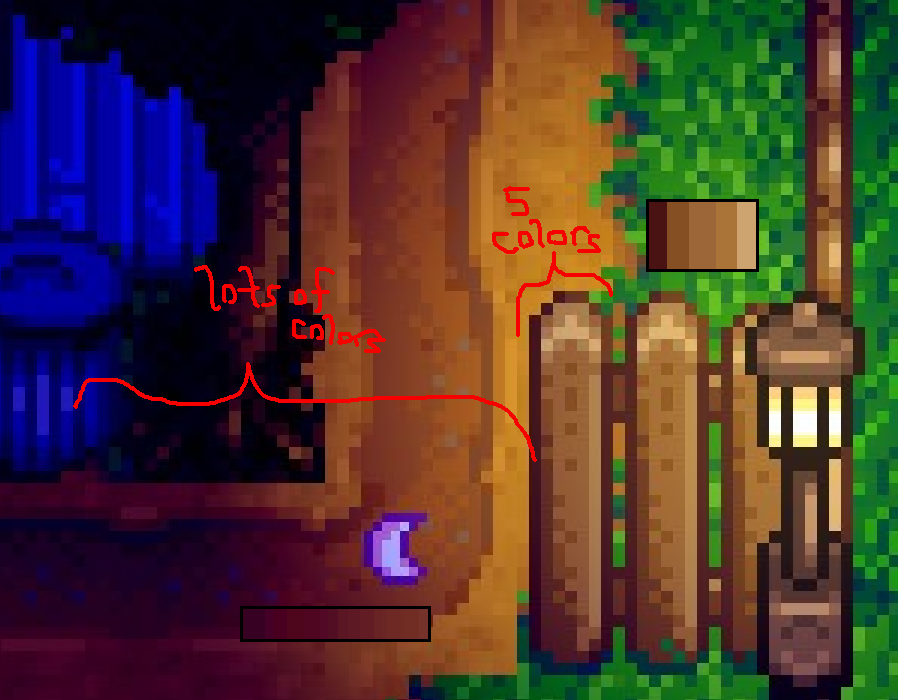
How many colors are in the pallette? Answer: yes.
The color inconsistency, I can also sympathize with-- it's hard, and arguably more work to take the result of your lighting calculation and quantize it down to the pallette used for the rest of the sprite artwork. But I mean, is it that hard? It's something you really can do programmatically, it's not like you need new art assets. You can use a lookup table in a shader, a volume texture if you want. There are different options for fixing this, but they just don't for some reason. Stardew Valley has no shortage of ambitious stuff- a procedural dungeon, a multiplayer mode, lots of characters with real-time behavior-- so it's not like they want for time or talent, but the take-away is this isn't where they chose to spend their time.
All of this being said, I want to make it clear that I liked the game.
So back on the game itself-- what Stardew does better than Harvest Moon:
• Automation of tasks. The sprinklers and auto-machines to feed and care for animals are a huge ease off of grind, unlockable in the game.
• Controls are less frustrating by design. It's impossible to accidentally expend seeds on an ineligible place, or drop things on the floor. How many times I've attempted in HM to give someone a gift only to Throw It On the Ground
• You can step "through" most crops, allowing for more flexibility in how to organize them
• The Minecraft-isms are fun and thoughtful.
• You can customize where new buildings are placed
• You can marry a person regardless of gender (e.g., same gender)- a step forward. While the original 1996 Harvest Moon doesn't have this, the modern Harvest Moons (Story of Seasons) don't have it either
• More interesting characters. For example I liked Linus's storyline, where he lives as a homeless person but your role is not to "fix" or "save" him. Rather, your role is to be his friend
• The relationship system is less broken. The rate of heart levels increase is slowed as the number of allowed gifts is fixed
• There is an interesting variety of characters. They all have unique events for friendship, not just marriage candidates
The game doesn't have a conventional "ending" like HM where there is a long scene and then credits.
There is an "evaluation" of sorts on the 3rd year as well as two big milestones. An easier, sad-outcome one (completion of Joja Community Development project) or the difficult, happy-outcome one (renovation of the Community Center). I ended up making two farms where one got each outcome. Although I did these, there is still a lot of replayability potential.
Overall verdict: it's good! Krobus/10
